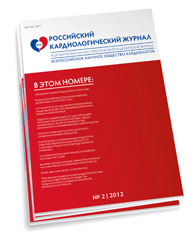Low Vitamin D in Obese Linked to Risks
Vitamin D deficiency was significantly associated with metabolic risk factors and predicted insulin resistance in morbidly obese adolescents, a researcher reported here.
Among the cardiometabolic factors linked with vitamin D deficiency in these patients were fasting insulin, at 15.8 uU/mL (r = −0.17, P<0.02) and hemoglobin (Hb) A1c (5.6%, r = −0.19, P<0.005), according to Marisa Censani, MD, of Columbia University Medical Center in New York City, and colleagues.
In addition, the homeostasis model assessment of insulin resistance (HOMA-IR) also correlated with vitamin D deficiency (3.4, r = −0.18, P<0.008), as did the whole-body insulin sensitivity index (6.8, r = 0.21, P<0.003), Censani reported in a poster session at the annual meeting of the Pediatric Endocrine Society.
"The finding that vitamin D status and HbA1c concentrations were inversely correlated in the setting of insulin resistance suggested that deficiency may be associated with poorer glycemic control," she explained.
Obesity is a recognized risk factor for vitamin D deficiency, and serum 25-hydroxyvitamin D levels have an inverse correlation with body mass index (BMI).
In both adults and young children, low levels of 25-hydroxyvitamin D have been found to correlate with hypertension, the degree of insulin resistance, and whether or not the patient progresses to diabetes. The association has not been studied previously for adolescents.
Therefore, Censani's group performed a cross-sectional analysis of laboratory measurements in 236 teens being evaluated prior to bariatric surgery at their center between 2006 and 2011.
The HOMA-IR and whole-body insulin sensitivity index (WBISI) were calculated from a 75-g oral glucose tolerance test.
The data were adequate for analysis in 211 of the patients, whose mean age was 16.
Mean BMI was 47.5 kg/m2, and mean waist circumference was 135 cm.
Baseline fasting glucose was 85.9 mg/dL, and high-density lipoprotein (HDL) cholesterol was 42.6 mg/dL.
The mean baseline vitamin D was 20.8 ng/mL, which was in the insufficient range. The level was deficient (below 20 ng/mL) in 53% and severely deficient (below 10 ng/mL) in 8%.
Only 18% were in the replete range for vitamin D, the researcher reported.
Additional factors that correlated with vitamin D deficiency were waist circumference (r = −0.17, P<0.02) and HDL cholesterol (r = 0.17, P<0.02).
Factors not associated with vitamin D deficiency included systolic blood pressure, C-reactive protein, fasting glucose, total cholesterol, low-density lipoprotein cholesterol, and triglycerides.
After adjustment for sex and BMI, serum 25-hydroxyvitamin D levels remained negatively correlated with HOMA-IR (r = −0.14, P<0.05) and positively correlated with WBISI (r = 0.19, P<0.008).
"Whether repleting vitamin D deficiency leads to improvements in insulin resistance in this morbidly obese adolescent patient population has yet to be determined. Further research is needed to determine the short- and long-term risks in adolescents with vitamin D deficiency for dyslipidemia, bone disease, and diabetes," she concluded.
Source: www.medpagetoday.com






